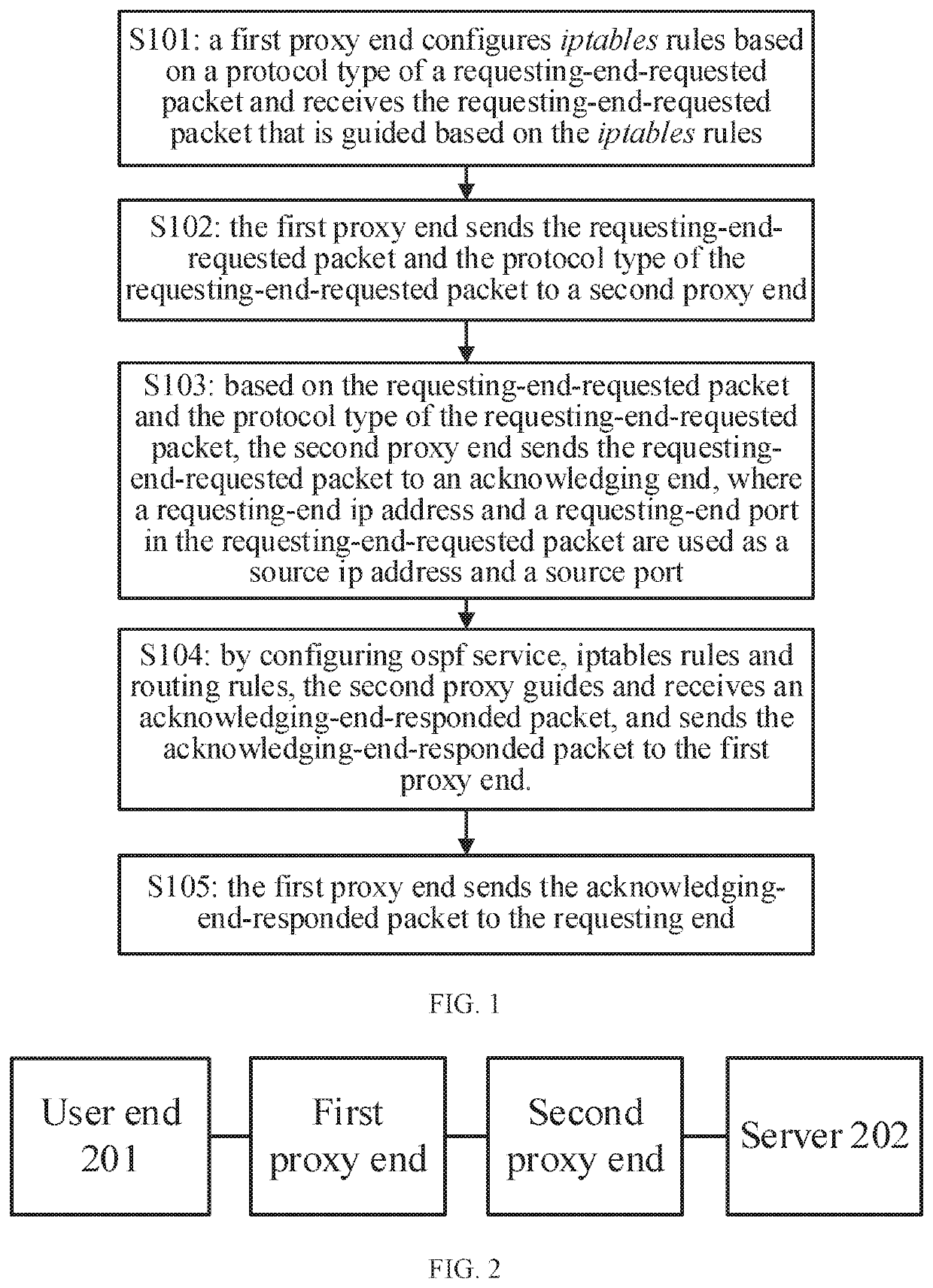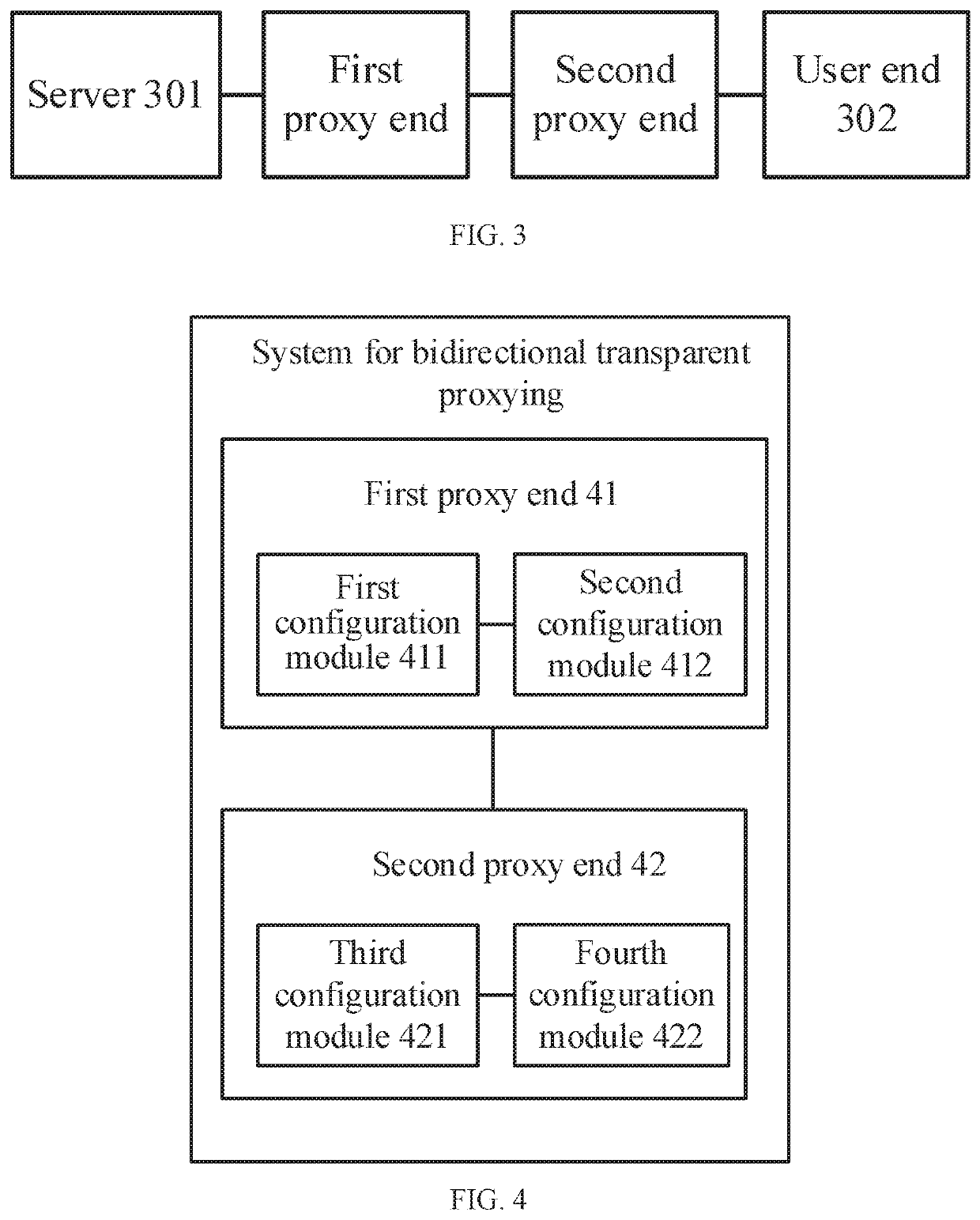Method and system for bidirectional transparent proxying
- Summary
- Abstract
- Description
- Claims
- Application Information
AI Technical Summary
Benefits of technology
Problems solved by technology
Method used
Image
Examples
embodiment 1
[0048]The present disclosure provides a method for bidirectional transparent proxying. Referring to FIG. 1, the method includes following steps.
[0049]At S101: a first proxy end configures iptables rules based on the protocol type of a requesting-end-requested packet and receives the requesting-end-requested packet that is guided based on the iptables rules (the requesting-end-requested packet may refer to a packet requested by a requesting end).
[0050]In some embodiments, the protocol type includes a connection-oriented protocol type (e.g., TCP type), a connectionless protocol (e.g., User Datagram Protocol, UDP) type, and an ICMP (Internet Control Message Protocol) type.
[0051]In some embodiment, for the connection-oriented protocol type, at Step S101: the first proxy end configures iptables rules based on the connection-oriented protocol type, and utilizes a redirect mechanism of NetFilter to redirect the requesting-end-requested packet to the first proxy end, thereby establishing a ...
embodiment 2
[0077]Referring to FIG. 4, the present disclosure provides a system for bidirectional transparent proxying, which is able to execute the method for bidirectional transparent proxying, provided in Embodiment 1. The disclosed system includes a first proxy end 41 and a second proxy end 42 The first proxy end 41 includes a first configuration module 411 and a second configuration module 412, and the second proxy end 42 includes a third configuration module 421 and a fourth configuration module 422.
[0078]The first configuration module 411 is configured for configuring iptables rules based on the protocol type of a requesting-end-requested packet and receiving the requesting-end-requested packet that is guided based on the iptables rules.
[0079]The second configuration module 412 is configured for sending the requesting-end-requested packet and the protocol type of the requesting-end-requested packet to the second proxy end 42.
[0080]The third configuration module 421 is configured for, bas...
PUM
 Login to View More
Login to View More Abstract
Description
Claims
Application Information
 Login to View More
Login to View More - R&D
- Intellectual Property
- Life Sciences
- Materials
- Tech Scout
- Unparalleled Data Quality
- Higher Quality Content
- 60% Fewer Hallucinations
Browse by: Latest US Patents, China's latest patents, Technical Efficacy Thesaurus, Application Domain, Technology Topic, Popular Technical Reports.
© 2025 PatSnap. All rights reserved.Legal|Privacy policy|Modern Slavery Act Transparency Statement|Sitemap|About US| Contact US: help@patsnap.com


